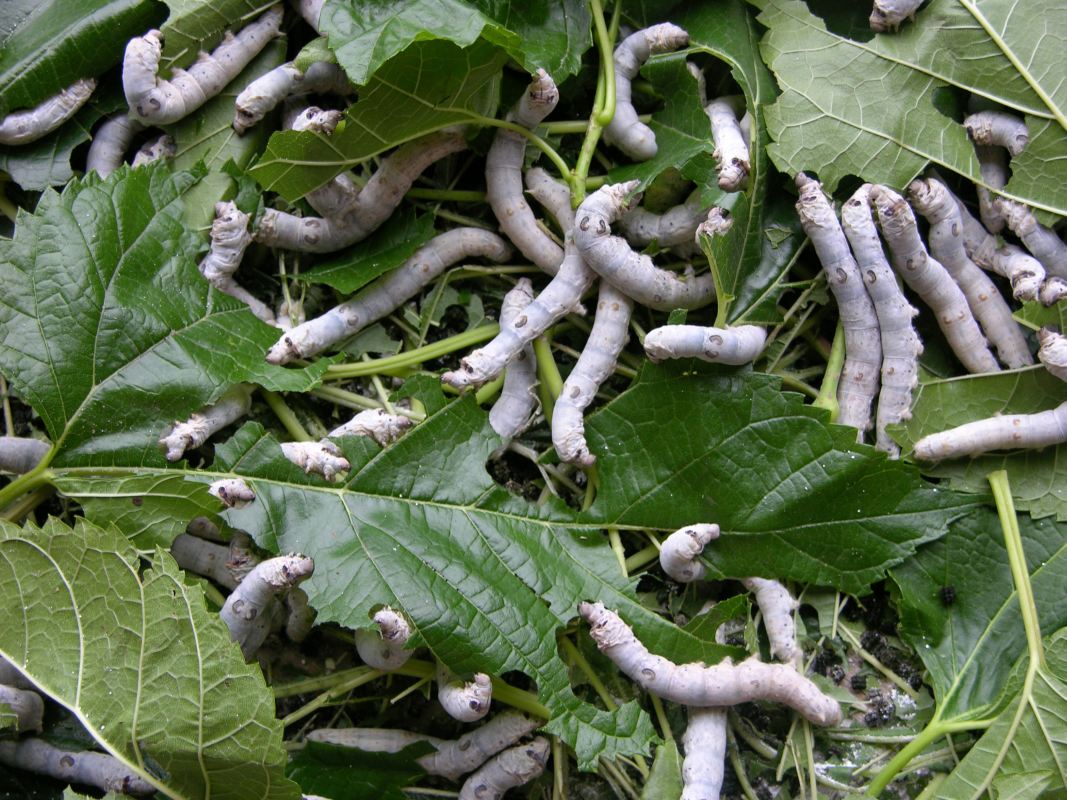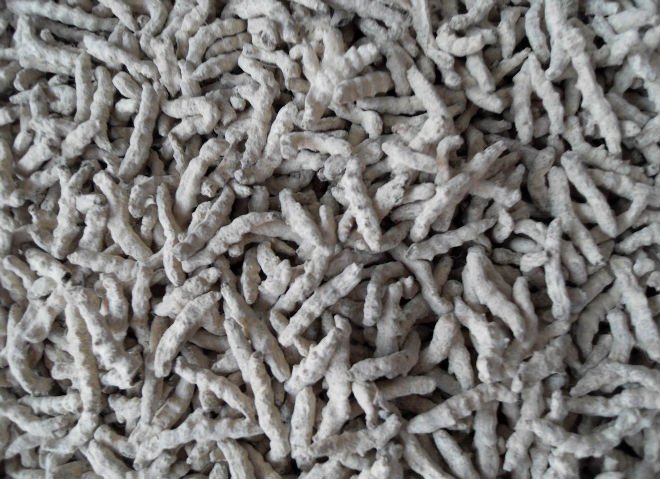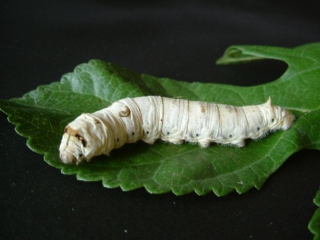- Wind Dampness induced pain of the extremities,
with
Angelica pubescens- Du huo and
Achyranthes
bidentata- Niu xi.
- Abdominal pain, vomiting, diarrhea, and spasms of the calf muscles due to
Dampness, with
Scutellaria baicalensis-
Huang qin and
Chaenomeles speciosa- Mu
gua.
- Traumatic injury, with
Vigna radiata- Lu
dou and
Alum- Ming fan, mixed
with vinegar, as a topically applied paste.
- Paralysis after stroke- 2 bags each of 30 g of droppings. Steam to make hot,
use one at a time to roll over limbs until cold then used other. Disperses Wind
and helps return movement. Treat as soon as possible- frequently.
[3]
- Bruising injuries- Use equal amounts of Mung bean powder, Silk worm droppings
and vinegar- rub on bruised area.
[3]
[1] Barefoot Doctor's Manual- 1977 Prepared
by the Revolutionary Health Committee of Hunan Province. Original Chinese manual-
Victor W. Sidel. Originally published by Dr Joseph Quin and the Fogarty International
centre, Bethdesda (1974). Madrona Publishers Seattle Washington ISBN 0-914842-52-8
[2] A Complete English Dictionary of Medicinal Terms in Chinese Acupuncture
and Herbalism 1981- Henry Lu Chinese Foundations of Natural Health- The Academy
of Oriental Heritage, Vancouver, Canada.
[3] Translation notes from Gary Seiford and Hocu Huhn - NSW College of Natural
Therapies. Sydney Australia.
[4]
Chinese Herbal Medicine Materia Medica- Dan Bensky and Andrew Gamble-
Eastland Press 1986 Seattle Washington ISBN 0-939616-15-7
[5]
tcmwiki.com
[6]
americandragon.com
Images
1.
tcm100.com
2.
imgarcade.com
3.
weiku.com
4.
goldenneedleonline.com
5.
fairfun.net
6.
tcm100.com Bombyx
mori. 蚕
Cán Silkworm Order: Lepidoptera
Bombyx
mori. 蚕
Cán Silkworm Order: Lepidoptera



 FUNCTIONS
FUNCTIONS
 蚕
茧
Cán jiǎn Silkworm cocoons
蚕
茧
Cán jiǎn Silkworm cocoons